 W
WThe Afro-Antillean Museum of Panama simply known as the Afro-Antillean Museum or MAAP, is an ethnographic museum located in Panama City. The museum was founded on December 23, 1980, by Reina Torres de Araúz in the building of the Former Christian Mission Chapel. The building was constructed between 1909 and 1910, which was the meeting place for a group of Barbadian Protestants. It is currently administered by the Ministry of Culture of Panama, and supported by the Society of Friends of the Afro-Antillean Museum of Panama.
 W
WLiberty Island is a federally owned island in Upper New York Bay in the United States. Its most notable feature is the Statue of Liberty, a large statue by Frédéric Auguste Bartholdi that was dedicated in 1886. The island also contains the Statue of Liberty Museum, which opened in 2019 and exhibits the statue's original torch.
 W
WAngel Island Immigration Station was an immigration station in San Francisco Bay which operated from January 21, 1910 to November 5, 1940, where immigrants entering the United States were detained and interrogated. Angel Island is an island in San Francisco Bay. It is currently a State Park administered by California State Parks and a California Historical Landmark. The island was originally a fishing and hunting site for Coastal Miwok Indians, then it was a haven for Spanish explorer Juan Manuel de Ayala. Later, it was developed as a cattle ranch, then, starting with the Civil War, the island served as a U.S. Army post. During the island's Immigration Station period, the island held hundreds of thousands of immigrants, the majority from China, Japan, India, Mexico and the Philippines. The detention facility was considered ideal because of its isolated location, making it very easy to control immigrants, contain outbreaks of disease, and enforce the new immigration laws. The station is listed on the National Register of Historic Places under the title Angel Island, U.S. Immigration Station, and is a National Historic Landmark. The station is open to the public as a museum – "a place for reflection and discovery of our shared history as a nation of immigrants".
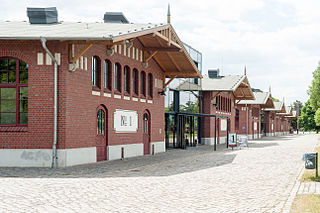 W
WBallinStadt is the name given to a memorial park and former emigration station in the Port of Hamburg, Germany.
 W
WThe Canadian Museum of Immigration at Pier 21, in Halifax, Nova Scotia, is Canada's national museum of immigration. The museum occupies part of Pier 21, the former ocean liner terminal and immigration shed from 1928 to 1971. Pier 21 is Canada's last remaining ocean immigration shed. The facility is often compared to Ellis Island (1892–1954), in terms of its importance to mid-20th-century immigration to Canada an association it shares with 19th century immigration history at Grosse Isle, Quebec (1832–1932) and Partridge Island in Saint John, New Brunswick (1785–1941). The Museum began as an independent institution run by the Pier 21 Society in 1999. It became a national museum run by the Canadian federal government in 2011.
 W
WThe Cité nationale de l'histoire de l'immigration is a museum of immigration history located in the 12th arrondissement of Paris at 293, avenue Daumesnil. The nearest métro station is Porte Dorée. It is open Tuesday through Friday from 10 a.m. to 5:30 p.m. and weekends from 10 a.m. to 7 p.m.; an admission fee of €4.50 is charged.
 W
WThe Cobh Heritage Centre is a museum located in Cobh, County Cork, Ireland. It is attached to Cobh railway station.
 W
WThe Museum of Danish America is a national museum located in Elk Horn, Iowa. Its mission is to "celebrate Danish roots and American dreams."
 W
WEllis Island is a federally-owned island in New York Harbor that was the busiest immigrant inspection station in the United States. From 1892 to 1954, nearly 12 million immigrants arriving at the Port of New York and New Jersey were processed there under federal law. Today, it is part of the Statue of Liberty National Monument and is accessible to the public only by ferry. The north side of the island is the site of the main building, now a national museum of immigration. The south side of the island, including the Ellis Island Immigrant Hospital, is open to the public only through guided tours.
 W
WThe Emigration Museum is a museum located in the city of Gdynia, Poland. Opened to the public on 16 May 2015, it showcases 200 years of Polish emigrations, from the 19th century to modern days. It is located in the former Maritime Station, which from the 1930s until 1979 was a transit building from which thousands of Polish emigrants left for their new homelands. The building was refurbished in mid-2014 at a cost of PLN 49.3 million.
 W
WThe German American Heritage Center, also known as the Germania-Miller/Standard Hotel, is a cultural center and museum in Davenport, Iowa, United States, that chronicles and preserves the history of German-Americans in the Midwest region. The building was listed on the National Register of Historic Places in 1983.
 W
WThe German Emigration Center is a museum located in Bremerhaven, Germany dedicated to the history of German emigration, especially to the United States. It is Europe's largest theme museum about emigration. Visitors can experience the emigration process through interactive exhibits. The museum also provides access to databases of immigration records.
 W
WThe German-American Heritage Museum of the USA, or GAHM, is located in the Penn Quarter's Hockemeyer Hall in Washington D.C., the capital of the United States of America. The GAHM is sponsored by several German and American organizations. The museum, headquarters of the German-American Heritage Foundation of the USA, traces the 400-year long history of Germans in America from 1600 to now.
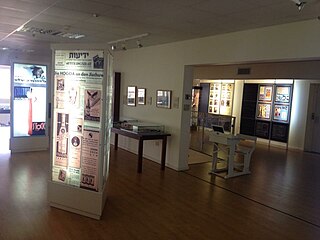 W
WThe German-Speaking Jewry Heritage Museum is a museum in Tefen, an industrial park in the north of Israel established by Stef Wertheimer.
 W
WThe Global Girmit Institute (GGI) Museum is co-located with the GGI Library at its headquarters in Saweni, Lautoka, Fiji. Girmit is a corruption of the English word, “agreement” from the indenture agreement the British government made with Indian labourers that consisted of specifics such as the length of stay in Fiji. The labourers came to be known as Girmityas.
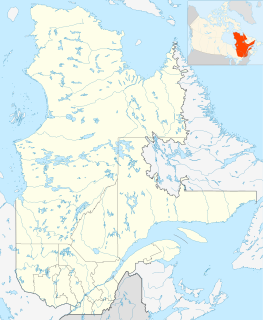 W
WGrosse Isle is an island located in the St. Lawrence River in Quebec, Canada. It is one of the islands of the 21-island Isle-aux-Grues archipelago. It is part of the municipality of Saint-Antoine-de-l'Isle-aux-Grues, located in the Chaudière-Appalaches region of the province.
 W
WHotel de Inmigrantes is a complex of buildings constructed between 1906 and 1911, in the port of Buenos Aires, Argentina, to receive and assist the many thousands of immigrants who were arriving in Argentina from many parts of the world. The hotel ceased to function in 1953, was declared a National Monument in 1995 and today houses the National Museum of Immigration and the Tres de Febrero National University Museum (MUNTREF) a.k.a. Contemporary Art Centre.
 W
WThe Immigration Museum is a museum primarily displaying Australia's immigration history. It is located on Flinders Street in Melbourne, Victoria, in the Old Customs House. The building occupies the site of one of the first buildings in the city, Fawkner's Hotel, built in 1835 by John Pascoe Fawkner, one of the founders of Melbourne.
 W
WThe Lower East Side Tenement Museum, located at 97 and 103 Orchard Street in the Lower East Side neighborhood of Manhattan, New York City, is a National Historic Site. The Museum's two historical tenement buildings were home to an estimated 15,000 people, from over 20 nations, between 1863 and 2011. The museum, which includes a visitors' center, promotes tolerance and historical perspective on the immigrant experience.
 W
WThe Migration Museum is a social history museum located in Adelaide, South Australia. It is one of the three museums operated by the History Trust of South Australia. It deals with the immigration and settlement history of South Australia, and maintains both a permanent and a rotating collection of works. Founded as an initiative of the State government in 1983, and with the museum opening on 23 November 1986, the Migration Museum in Adelaide is the oldest museum of its kind in Australia. The museum aims to promote cultural diversity and multiculturalism, which they define as including aspects of ethnicity, class, gender, age and region.
 W
WThe Museum of Immigration and Diversity is a British museum at 19 Princelet Street in Spitalfields, in the London Borough of Tower Hamlets. The Grade II listed building in which the museum is located was a house built in 1719 for the Huguenot silk merchant Peter Abraham Ogier.
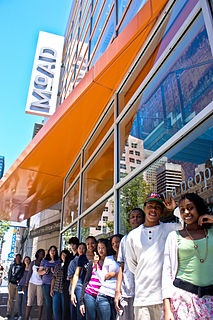 W
WThe Museum of the African Diaspora (MoAD) is a museum in San Francisco, California, documenting the history, art, and culture of the African diaspora. Their focus spans the migration of Africans across history, from the diaspora at the origin of human existence through the contemporary African Diaspora around the world. It is located at 685 Mission St. next to the St. Regis Museum Tower. The museum, and the building, opened in 2005. With a small staff of 12, it primarily focuses on presenting the work of other institutions.
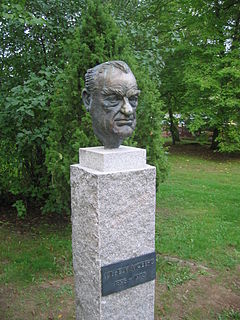 W
WSwedish Emigrant Institute was a research center and museum designed to preserve records and memorabilia relating to Swedish-American migration.
 W
WThe Ulster American Folk Park is an open-air museum just outside Omagh, in County Tyrone, Northern Ireland. With more than 30 exhibit buildings to explore, the museum tells the story of three centuries of Irish emigration. Using costumed guides and displays of traditional crafts, the museum focuses on those who left Ulster for America in the 18th, 19th and 20th centuries. The museum is part of National Museums Northern Ireland.
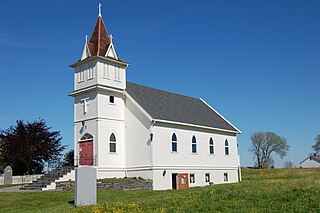 W
WWestern Norway Emigration Center is an open-air museum located at the village of Sletta on the island of Radøy in Vestland county, Norway. The museum consists of a small church and several historical buildings which were reassembled in a rural environment. The building were re-located from Minnesota and North Dakota from locations characterized by Norwegian American immigration during the end of the 19th and the beginning of the 20th century.